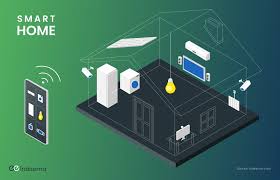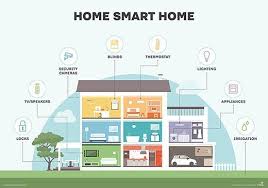
Smart home technology has already transformed how we live—offering convenience, security, and energy efficiency through connected devices. But by 2025, smart homes are evolving far beyond basic automation. With advancements in artificial intelligence (AI), the Internet of Things (IoT), and edge computing, homes are becoming more intuitive, personalized, and proactive.
Let’s explore how smart homes are getting even smarter and what this means for homeowners.
1. AI-Powered Personalization
Next-generation smart homes use AI to learn homeowners’ preferences and habits, enabling:
- Adaptive climate control that adjusts temperature based on routines and weather forecasts.
- Smart lighting that changes colors and brightness automatically to suit mood and time of day.
- Personalized entertainment recommendations and multi-room audio control.
- Voice assistants that understand context and complex commands.
This deep personalization creates more comfortable and efficient living environments.
2. Enhanced Security and Safety
Smart home security systems are becoming more sophisticated with:
- AI-driven facial recognition for access control and visitor alerts.
- Predictive analytics to detect unusual activity or potential hazards.
- Integration with emergency services for faster response.
- Smart smoke detectors and leak sensors that provide early warnings.
Smarter security enhances peace of mind and safety for families.
3. Seamless Device Integration
Homes are moving toward fully interoperable ecosystems, where devices from different brands communicate effortlessly. This means:
- Coordinated actions like locking doors when the security alarm is armed.
- Unified control through a single app or voice interface.
- Automation that spans lighting, appliances, HVAC, and even gardening systems.
Simplified management makes smart homes more user-friendly and efficient.
4. Energy Management and Sustainability
Smarter homes optimize energy use by:
- Monitoring consumption in real-time and suggesting savings.
- Using renewable energy sources like solar panels integrated with smart batteries.
- Automatically adjusting appliance use during off-peak hours.
- Supporting electric vehicle charging with intelligent scheduling.
These features help reduce utility bills and environmental impact.
5. Health and Wellness Monitoring
Emerging smart home tech supports health with:
- Air quality sensors that detect pollutants and allergens.
- Sleep trackers embedded in beds or bedrooms.
- Alerts for unusual patterns indicating potential health issues.
- Integration with wearable devices and telehealth platforms.
Smart homes become partners in maintaining well-being.
6. Challenges and Considerations
As smart homes get smarter, challenges include:
- Data privacy and security risks from increased connectivity.
- Complexity in setup and maintenance for less tech-savvy users.
- Cost barriers limiting access for some homeowners.
- Interoperability standards still evolving across manufacturers.
Addressing these issues will be key to widespread adoption.
Final Thoughts
Smart homes are evolving into intuitive, interconnected environments that anticipate needs, improve security, conserve energy, and promote wellness. As AI and IoT advance, our living spaces will become even more responsive and personalized.
Embracing these innovations means stepping into a future where homes don’t just house us—they actively enhance our daily lives.
